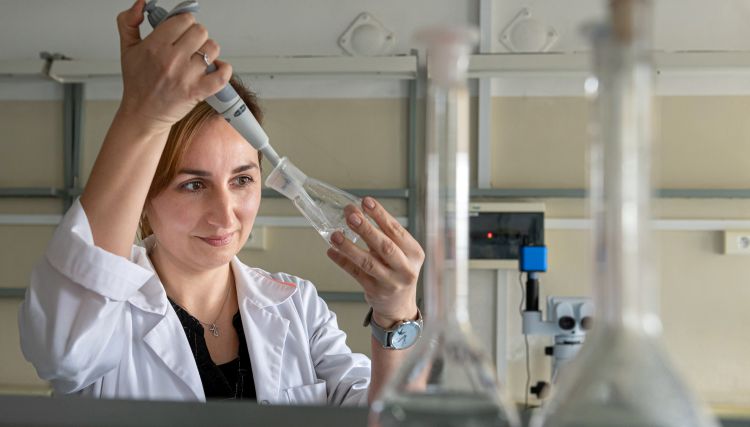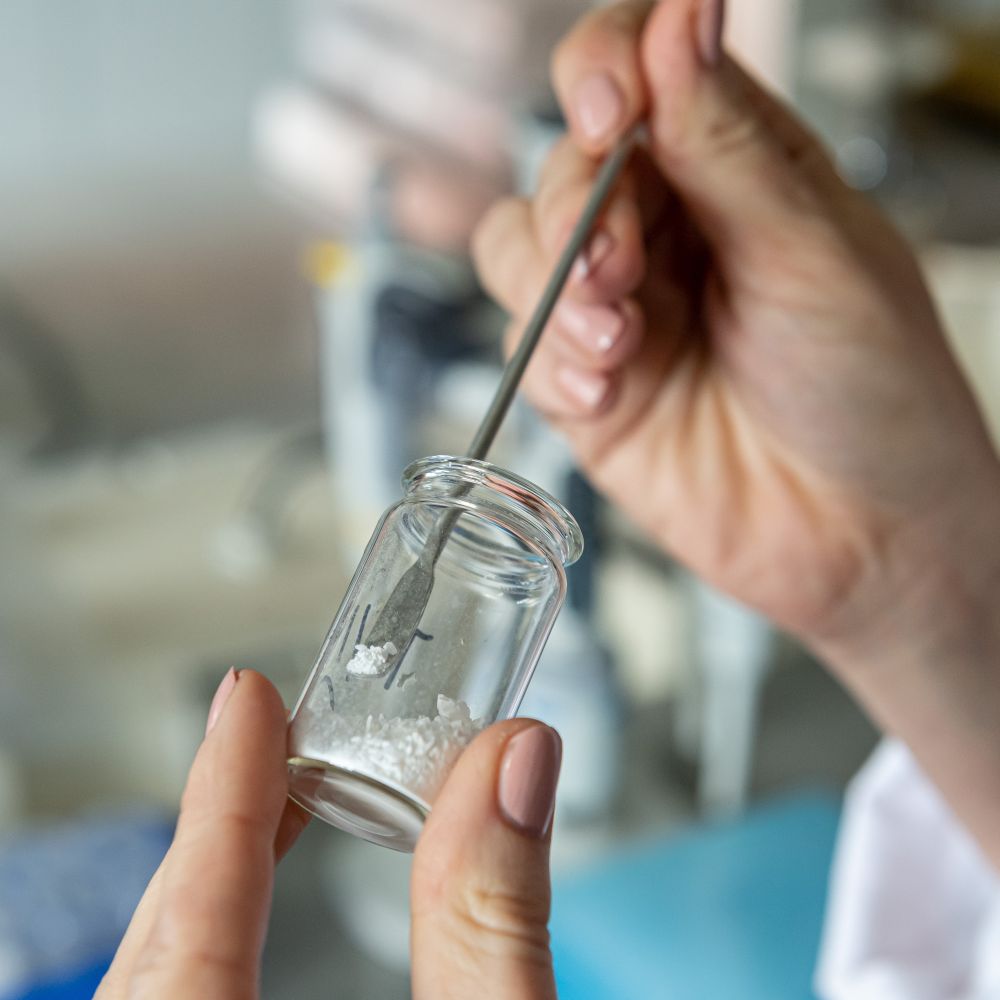YOUR BROWSER IS OUT-OF-DATE.
We have detected that you are using an outdated browser. Our service may not work properly for you. We recommend upgrading or switching to another browser.
Date: 24.03.2022 Category: general news, science/research/innovation

Many harmful substances, such as antibiotics and pesticides, end up in groundwater. How accurately and effectively can this “cocktail of chemicals” be tested? A new method is being developed by Katarzyna Smolińska-Kempisty, PhD, Eng from the Faculty of Chemistry.
It is quite a challenge to identify the various micropollutants occurring in water, including veterinary antibiotics used in animal husbandry and herbicides contained in agricultural fertilisers.
Constant and regular monitoring of the concentration of such hazardous substances is an essential measure. The wide variety of these compounds, often chemically similar, makes their separation and identification extremely difficult and sometimes impossible.
 Katarzyna Smolińska-Kempisty is working on a new method of recognising such compounds using sensory materials.
Katarzyna Smolińska-Kempisty is working on a new method of recognising such compounds using sensory materials.
– Our sensors will be capable of repeatedly extracting selected groups of micropollutants from water. The self-healing properties of these materials will not only allow them to be reused, but above all to determine the concentration of certain pollutant types in filtered water – explains the researcher from the Department of Process Engineering and Polymer and Carbon Materials Technology.
She explains that the materials will function as sensors, as it were, capable of absorbing only certain types of pollutants. – These will be based on molecularly imprinted polymers that respond to changes in the environment, so-called smart polymers (SMIP). These polymers, along with a change in pH and temperature, will change the arrangement of polymer chains, forcing the entire polymer network to work – elaborates Dr Smolińska-Kempisty.
– It’s as if we had a “footprint” of specific microelements in the sorbent, a sort of template – she adds.
During the water filtration process, selected micropollutants will combine with the “footprints” present in the sorbents and thus become removed from the filtrate. – As a result, we will easily be able to measure the amount of antibiotics or pesticides in a sample – says the researcher.
She also stresses that the proposed solution is in line with green chemistry. The polymerisation process is intended to take place in an aqueous environment without the use of harmful organic solvents.
A team of scientists from the Department of Chemistry led by Dr Katarzyna Smolińska-Kempisty will be involved in the research work, carried out under a grant funded by the National Centre for Science.
Our site uses cookies. By continuing to browse the site you agree to our use of cookies in accordance with current browser settings. You can change at any time.